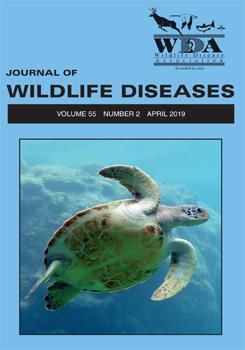The appearance of West Nile virus (WNV) coincided with declines in California, US bird populations beginning in 2004, and particularly affected corvid populations, including Yellow-billed Magpies (Pica nutalli), an endemic species to California. Our objective was to determine if the timing of the WNV epidemic correlated with changes in the genetic diversity or population structure of magpies. We hypothesized the declines in magpie abundance from WNV would lead to genetic bottlenecks and reduced genetic diversity, but not to changes in population genetic structure. To test these hypotheses, we genetically typed magpie samples collected during the Dead Bird Survey before WNV arrived (2002–04), immediately after WNV arrived in late 2004 (2006–08), and several generations after the onset of the epidemic (2009–11). For each of these three time periods, we tested for genetic bottlenecks, estimated genetic heterozygosity, allelic richness, relatedness, effective population sizes, and genetic structure, with the use of 10 nuclear microsatellite loci. Although there was no evidence for spatial or temporal genetic structure, genetic-diversity estimates were similar or below estimates for endangered corvid species. Measures of genetic diversity were consistent across time periods. In contrast to our expectation, we detected a genetic bottleneck prior to the WNV epidemic, which may have coincided with severe drought conditions in California, increasing human population size in magpie range, and an estimated 33% decrease in population size. We found weak evidence to support a bottleneck after the introduction of WNV in California. Our results suggest the WNV epidemic did not have additional catastrophic effects on the neutral genetic diversity of P. nutalli in the sampled areas. However, because we detected lower heterozygosity in Yellow-billed Magpies than has been reported in closely related endangered species, this species is of conservation concern and should be monitored to detect further population declines or loss of genetic diversity.
How to translate text using browser tools
9 April 2019
GENETIC DIVERSITY OF YELLOW-BILLED MAGPIES (PICA NUTALLI) BEFORE AND AFTER A WEST NILE VIRUS EPIDEMIC
Amelia Vazquez,
Kyle D. Gustafson,
Benjamin Harmeling,
Holly B. Ernest
ACCESS THE FULL ARTICLE

Journal of Wildlife Diseases
Vol. 55 • No. 2
April 2019
Vol. 55 • No. 2
April 2019
disease ecology
natural experiment
Pica nutalli
population genetics
West Nile virus




